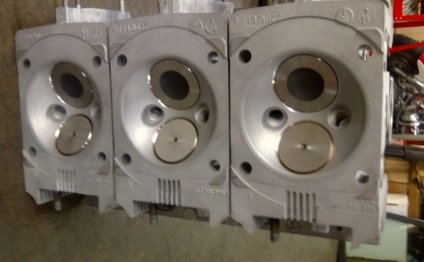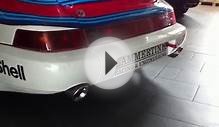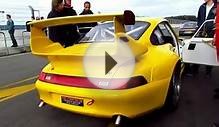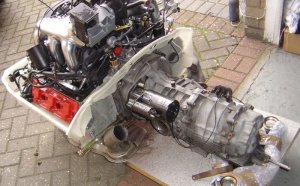
Porsche 964 Engine
The 3.6 litre machines genuinely have excellent energy improvement potential with a few caveats that are talked about here.
RS Mid-weight Flywheel & Clutch kits
We are offering a mid-weight type of the RS lightweight flywheel & clutch kit for people who wish much better throttle response and motor speed. The regular RS flywheel weighs 12 pounds (from the OEM Dual-Mass 38 lb one), but could induce engine stalling issues with the 964 and ’95 993’s. Later on 993’s, ’96-’98, aren’t as at risk of stall using RS flywheel offered every little thing regarding engine is within good condition and operating properly.
Our mid-weight RS flywheel adds 7 lbs which adds enough inertia to help keep it from stalling when the RPM’s fall too soon for Motronic system to catch it.
We providing this as a total kit containing everything needed to do an effective clutch replacement.
These kits consist of:
RS mid-weight flywheel, RS band equipment, RS pressure plate, RS clutch disk, RS guide pipe, pilot bearing, release bearing, stress plate bolts, flywheel bolts, rear primary seal, and slave cylinder (which they constantly require) for $ 2751/complete. The regular RS flywheel & clutch system works $2300, identical to above.
Photographs not far off.
Distributor belt damage
The 3.6 ended up being the initial manufacturing 911 motor that emerged equipped with twin-ignition. Porsche used a distinctive dual-distributor that was inexpensive to produce, compared to the RSR product, that has been typically trustworthy. The only problem ended up being a premature failure regarding the rubber buckle that drives the 2nd device due to ozone gasoline buildup in the distributor. If the belt broke, the 2nd rotor stop switching, leading to erroneous timing in the cylinder your rotor had been pointing at the time of breakage. This typically triggered serious injury to that piston and cylinder. Installing the factory vent system fixed this problem by pushing pressurized air through the cooling shroud through suppliers to evacuate the ozone gas that attacked the rubberized. We do offer a distributor rebuilding solution to displace the buckle and bearings, if required.
These machines had been additionally designed with a knock sensor for each lender of cylinders so that the Motronic device could selectively retard a cylinder which was detonating.
Although Porsche claims a compression ratio of 11.1:1, we've calculated a majority of these engines and additionally they range between 10.6 to 10.8:1. The actual only real pistons that truly had the 11.3:1 compression ratio were the 102mm pistons through the 3.8 RSR engines.
Cylinder Leakage
The first generation of 3.6 litre engines from 1990 to early 1992 performedn’t use a mind gasket which caused some leakage to-be observed from between your minds and the the surface of the cylinders. Generally, it was simply a tiny seepage of oil which seemed far even worse than it certainly ended up being. Porsche solved the difficulty by setting up sealing bands during the early 1992 to stop really serious leakages therefore the remaining portion of the 964 and 993 machines all had gaskets.
For owners of these very early 964’s without gaskets with some dripping problems, we are able to fix this dilemma by machining the heads for sealing bands and altering the top these early cylinders to suit and seal much better.
INTERESTING VIDEO



Share this Post
Related posts
Porsche 964 Engine for sale
REQUIREMENTS 54, 117 Mileage: 174 Top Speed: 1994 Year: 4.8 0 - 60: Jan 16 MOT Expiry: 385 BHP: Aug 16 Taxation Expiry: 5…
Read More1990 Porsche 964 Cabriolet
CarGurus 1990 Carrera writes: Pros The 5 speed manual is a great plus, it reminds me of driving the Autostrada of Italy while…
Read More










